Becoming the best version of yourself—either coach or student—usually means exploring the other side of your tendencies and preferences. But being stuck in either a creative or structured approach to training (or coaching) keeps you from the resources the other ‘side’ has to offer. Here Brett Jones, Director of Education, explains the pros and cons of each approach and how to benefit from both worlds to be a better coach.
“Play is the highest form of research.” Albert Einstein
“Structure is not just a means to a solution. It is also a principle and passion.” Marcel Breuer
Light and dark. Good and evil. Tension and relaxation. Dichotomies—two contrasting concepts or “things” that oppose one another—exist in our lives. Part of the human condition is being drawn to these contrasts. We use them to frame our lives, drawing lines in the sand to separate us vs. them, right vs. wrong, this vs. that.
But the artist Pablo Picasso warned against letting such unyielding lines rule our lives. Just because a dichotomy exists does not mean we cannot or should not use the best of the opposing concepts. To that end, the opening Einstein and Breuer quotes reveal another dichotomy in learning, teaching and practice—creative vs. structured.
As practitioners, we are prone towards one or the other. My approach is generally structured, while others in our School of Strength, like Team Leader Michael Castrogiovanni and Senior Instructor Paul Daniels, are more creative. But few things ever exist in absolutes. Strengths and weaknesses exist on either side of this coin and understanding them helps us draw the best from both “sides.”
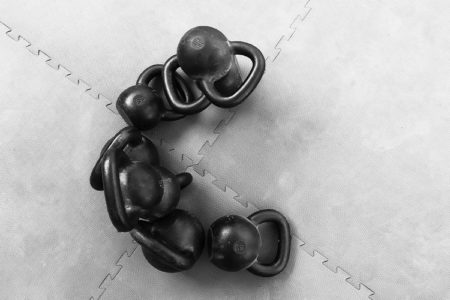
Creative
Creative people “play” with their exercises. They explore different ranges and motions possible in an exercise.
Pros:
- Creates some very effective exercise variations;
- Increases the variability and fun in training.
Cons:
- Has a low boredom threshold which threatens the continuity in the training process;
- Can promote random acts of variety;
- Can shift focus on “cool” exercise variations that lack transfer;
- Can emphasize the exercise rather than what the adaptation the exercise is looking to elicit;
- Can fall victim to drills that are examples of “just because you can doesn’t mean you should.”
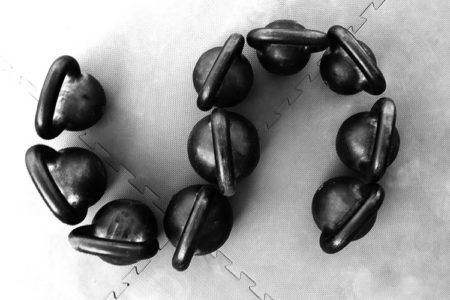
Structured
Structured folks tend to do what they’re shown, how they have been shown to do it.
Pros:
- Encourages the continuity of the training process;
- Grooves and builds deep skill, strength, and technique;
- Makes for excellent beginner students;
- Has a lower need for ‘entertaining variety.’
Cons:
- Can miss out on varieties of fundamental exercises that might actually assist in overcoming progression “roadblocks,” and help push through training plateaus in skill acquisition;
- Can stick to the way they were shown to the point of doing something that is not right for their individual situation.
What Does it Mean “In Action”?
As the Director of Education, my drive toward structure helps me to format and structure our curriculum and standards, without getting distracted by every shiny or cool potential drill. Trust me; there are lots. Or by getting bogged down by the deep details that underpin our skills but could confuse a new learner. In my practice (what some people call working out), it means that I don’t get bored with simple yet effective routines, honoring the continuity of the training process. On the downside of being structured, I can miss out on the benefits of the creative- inspired movement variability.
When Being Structured Goes “Wrong”
Any “belief” held too rigidly can be an issue. Structured folks tend to take instructions and details as “writ in stone” edicts. For our SFG Kettlebell Instructor certification, a testing standard is to swing to chest level. Read: testing standard. Not a direction to “never” swing above chest level. In fact, you need to be able to pop your KB swing to head height or just above for efficient snatches.
People can hold on to instructions so strongly that they ignore discomfort or pain. Being advised to swing, squat, etc. with your feet straight ahead is one of these. For those who want to know why or are still trying, I address that in this article: Adjust your sails (and your stance) with the Lock and Rock. Remember we can’t save you from you.
When Being Creative Goes “Wrong”
No doubt about it: creativity and play are fun. But skill is based on continuity and practice. If “every” session is something different, you are creating an unnecessarily long path to build skill and progress. Being creative can also mean training lighter, which can let you mentally check out of your session. And while using light weights can be effective for a time, you also need to move some iron, heavy iron—heavy being relative to the individual—to get better at withstanding stress.
As much as I like returning to my 24kg kettlebell, it simply doesn’t have the impact that swinging a 56kg does.
Best of Both Worlds
So, let’s take the best of both worlds.
Determine your goal. Sinister will do nicely (and is the focus of my training at the moment).
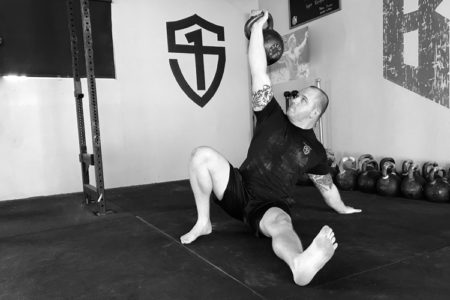
Swings and get-ups will form the foundation of the program. This is where you will be structured. Set the routine. Now work it.
Find the “missing links.” In my The Three Pillars article, I discuss the concept of pillars of rational training as my mentor Dr. Ed Thomas described them. Note that variation in the classical sense was variations in technique or exercise that filled a “missing link” toward the progression of a skill. It could be your breathing pattern for your swings, or breathing during recovery, or staying “squared off” during your one-arm swings. Identify the gap and find a drill to address that weak link. Use your creativity or borrow someone else’s.
So when do I step out of my structured box? During movement preparation with Ground Force Method and in get-up variations. That’s when I channel my creativity.
Don’t get locked into your structure. But don’t get lost in creativity either. Acknowledge your penchant, understand each’s strengths and weaknesses, and take advantage of the best of both.

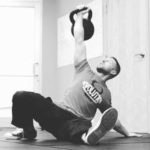
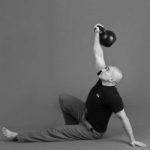





I think Steve may have hit the nail on the head. I find in my quest to coach and develop my own skills in any area ( and I am not a kb trainer, though I’ve been certified), taking a step back is a really good idea. When I step back I realize that structure and creativity are not dualistic at all. They are in no way opposed. If I am to be effectively creative, I must provide a structure around which that creativity can blossom. If I am to be structured, I must realize that I can never step into the same river twice. One of the most engaging things about this community is that the majority of its members are thoughtful individuals. This is really what I have found makes me a better student and coach. The willingness to spend the time to think about what I am doing and what my students are doing as well is essential.
Personally, (because it’s my personality) I have stayed on the structured side in my own training to the point where I have avoided newer, more creative exercises that would have enabled me to work around a developing injury, in favor of sticking with my routine because it was “what worked”. This article has been a great reminder for me to embrace a little “creativity” (read: “change”!), Brett.
The place where I am training folks now seems to be overboard with creativity (exercise/modality overload) and a lack of true direction (improvements and results may be being achieved, but it looks to be just happenstance). I am struggling to adapt because it’s just so not my M.O., but you have encouraged us (and me in particular) in this article Brett to be more open to creativity and take advantage of the good it can offer, while maintaining the positives of being structured.
Thank you for sharing!
I see a lot of “random acts of variety” (as Rif has called them) as well – but creativity can be powerful.
I find that as time goes on, my tendencies with regard to structure and creativity in my own training and in my coaching and planning take on a relationship like that between climate and weather. The structure creates the trajectory of the training plan, in general. Change is slow and takes place over long timespans. Creative interjections are like the weather. They follow the trajectory of the climate, but vary between “seasons” and even days and weeks.
As such, I too believe that structure and creativity can (and should) coexist, although structure pays more dividends if creative offshoots are not to deviant from the goal.
Sam
Great analogy – we have to have a blueprint so to speak so variety assists us in overcoming progression “stalls”
Mr. Jones, thank you for reminding us all to step back and see the bigger picture of our training and the role our personalities play in it.
For those of us who fall on the creative side, I have found it helps to choose simple programs. The Rite of Passage from Enter The Kettlebell and the program from Kettlebell Simple and Sinister are two examples of program I can follow, while I’ve struggled with complex programs, even some written expressly for me, because … well, if I could tell you why, I’d hang up my teacher credentials and become a therapist. 🙂
Thank you again for your wise words.
Thank you Sir